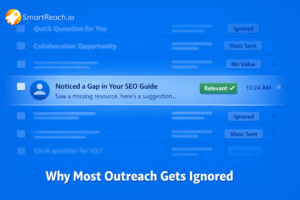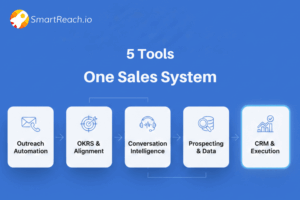How to handle inactive subscribers and maintain healthy email list?
You’ve been growing your email list, and on the surface, everything looks great.
But your open rates could be falling, emails may be landing in spam folders, and fewer people are seeing your campaigns.
The real problem?
Inactive subscribers. They’re actually hurting your sender reputation and dragging down performance for the rest of your list.
I’ve seen teams turn this around by cleaning up their list, instantly improving engagement and trimming down wasted email spend.
In this blog we shall be talking about different ways by which you can handle inactive subscribers.
Why do inactive subscribers hurt email deliverability so much?
Email providers judge your sender’s reputation based on engagement.
If too many people ignore or delete your emails, your messages start landing in spam, even for active subscribers.
They track things like:
- Opens, clicks, and replies
- Spam complaints and bounce rates
- Overall engagement across your list
Poor engagement drags down your domain and IP reputation, especially if you’re on a shared server.
You can learn more about why inactive subscribers hurt email deliverability from our article.
How to handle inactive subscribers without wrecking your email list
1. Segment email addresses before you delete
Some inactive subscribers might come back, but others are gone for good.
Segment email list by:
- Engagement: Recently inactive (mild re-engagement), moderately inactive (active campaigns), or totally cold (final email before removal).
- Value: Decision-makers, seasonal buyers, or leads with long B2B sales cycles might still be worth keeping.
Don’t lump everyone into the same bucket; some “quiet” subscribers are just between buying cycles.
2. Run smart re-engagement campaigns
Send personalized emails that speak to their past behavior or interest. Keep the tone real and human.
Examples of email subject lines that work:
- “Still with us, [Name]?”
- “One last check-in”
- “[Name], still into [topic]?”
Template framework:
- Mention what they signed up for
- Ask if the content still aligns with their interests
- Offer a valuable resource tied to their original pain point
- Give them the option to stay or quietly opt out
Adapt messaging by industry: use past browsing data for e-commerce, company news for B2B, and role-specific struggles for professionals.
3. Let them choose the frequency
Don’t force an unsubscribe. Provide them with alternative options.
Options to offer:
- Weekly updates
- Monthly recaps
- Quarterly insights
- “Pause for now”
Letting subscribers control how often they hear from you can cut down unsubscribes, and even bring some back later.
4. Send a respectful “Last Chance” email
If they don’t bite, send a clear, no-pressure final message.
Two solid tones:
- Professional: “We’ll remove you in 48 hours unless you click here to stay.”
- Results-driven: “You’ll stop getting [benefit] unless you confirm.”
This lets you clean your list without burning bridges.

5. Remove or pause based on value
After the re-engagement series, make the call.
Remove if they:
- Haven’t engaged in over a year
- Don’t match your audience
- Consistently bounce or hurt deliverability
- Bring no long-term value
Pause if they:
- Work at a key target company
- Have seasonal buying patterns
- They are part of long B2B sales cycles
Be strategic. Not everyone inactive is useless.
6. Fix your welcome flows
Prevention > cleanup.
Most subscribers go cold early because onboarding flops.
What to fix:
- Send the first email immediately
- Deliver the promised content right away
- Set expectations clearly
- Offer another resource in follow-up emails
- Ask what they want to learn
Subscribers who engage in the first month are way more likely to stay active long-term.
7. Schedule regular email list hygiene
Make cleanup a habit, not a panic move before big launches.
Quarterly:
- Check who’s fading
- Run re-engagement
- Analyze lead magnet performance
Every 6 months:
- Do a deeper cleanup
- Refresh re-engagement emails
- Review content and frequency strategy
Yearly:
- Rebuild onboarding flows
- Audit landing pages and lead magnets
- Reset benchmarks and KPIs
Sync this with your campaign calendar so your list is clean before major pushes.
Recommended Read: How to Keep Email List Clean and Up to Date
8. Personalize emails based on behavior
Generic re-engagement emails? Meh.
Personalized ones? Way better.
Use behavior like:
- Past downloads
- Previously opened topics
- Last click or visit
- Role or company type
Even timing matters. If someone used to click at 9 AM on Wednesdays, hit them then.
9. Test everything
Re-engagement isn’t one-size-fits-all. A/B test to see what sticks.
Test:
- Subject lines (questions vs. statements, short vs. long)
- Senders (brand vs. personal)
- Tone (friendly vs. professional)
- CTAs and layout
- Social proof (testimonials vs. stats)
Track more than open rates:
Watch re-activation, unsubscribes, cost per re-engaged lead, and revenue.
Start small (test on 20% of your list), pick a winner, and roll it out to the rest.
Let me know if you want this tailored to a specific industry or platform (like HubSpot, SmartReach, Mailchimp, etc).
Preventing subscriber inactivity before it starts
Deleting cold leads isn’t always ideal, especially in B2B. Instead, move them to a quarterly nurture flow. Keeps your list clean without closing the door.
To avoid inactivity from the start:
- Be upfront: Tell new subscribers how often you’ll email and what to expect. Set the tone early.
- Send value fast: Don’t wait. Your first email should be your best one.
- Drive engagement early: Ask simple questions like “What’s your biggest challenge with [X]?” to spark replies and build connection.
- Watch for drop-offs: Set alerts for declining opens, clicks, and gaps between actions. Act before they ghost.
- Let them choose: Use a preference center so they control email frequency and topics.
- Segment early: Tailor content by role or intent. Relevance keeps people engaged.
Conclusion: The strategic value of systematic list management
Cleaning your email list isn’t about chasing better metrics, it’s about making sure your emails land where they matter.
A smaller, more engaged list means better email deliverability, lower costs, and stronger performance. Start by identifying inactive subscribers, segment them by value, try re-engagement, and remove the ones who stay silent.
Set up a regular cleanup process and improve your welcome flow to avoid future inactivity.
The payoff?
More impact from every email you send.
And if you’re running cold outreach, SmartReach.io can help you send personalized, high-converting emails at scale without messing up your sender reputation.
Try SmartReach.io FREE for 14 days.
FAQ: Common inactive subscriber questions
How long before removing inactive email subscribers?
Remove inactive email subscribers after 6-12 months of no engagement, following a 2-3 email re-engagement campaign sequence. B2B companies with longer sales cycles can extend to 12 months, while high-frequency senders should use 6 months.
Do inactive subscribers hurt email deliverability?
Yes, inactive subscribers significantly lower engagement rates, which signals to email providers that your content isn’t valuable. This reduces inbox placement for all recipients, not just inactive ones. Lists with high inactive percentages can see 40-60% of emails land in spam folders.
Should I delete inactive subscribers or keep them?
Delete inactive subscribers who haven’t engaged in 12+ months and didn’t respond to re-engagement campaigns. However, pause high-value prospects (enterprise contacts, strategic accounts) and move them to quarterly touchpoint sequences instead of permanent deletion.
What’s a good email engagement rate after cleanup?
After inactive subscriber removal, healthy email lists typically achieve:
- B2B: 25-35% open rates, 3-7% click rates
- E-commerce: 20-30% open rates, 2-5% click rates
- Professional Services: 28-40% open rates, 4-8% click rates
If your post-cleanup rates fall below these ranges, focus on content quality and segmentation improvements.




